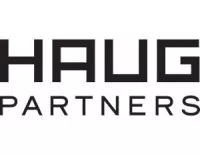An always popular route for brand owners applying for U.S. trademark protection is filing based upon a bona fide intention to use a mark in commerce. The intent to use filing basis affords protection from the date of filing, which can be years before actual use in commerce commences. The Lanham Act provides that “[a] person who has a bona fide intention, under circumstances showing the good faith of such person, to use a trademark in commerce may request registration of its trademark.”1 Registering a mark based upon a bona fide intent to use remains popular in the United States which, unlike most other countries, has a strict requirement for use of a mark in commerce.
Advantages
An obvious advantage of an intent to use application is that an applicant may begin the application process before commencing use of the mark. Furthermore, this framework provides that the application filing date serves as the date of priority for the mark, which can serve as an instrumental date in the event of a legal conflict with a competing trademark applicant or rights holder. Finally, an application based upon a bona fide intent to use the mark in commerce is submitted with only a declaration by the applicant of its bona fide intention to use the mark in commerce. This declaration constitutes evidence of good faith; the examining attorney will not go further in evaluating good faith intention to use the mark.
Risks
Trademark applicants should be wary if seeking to abuse this process because it has become increasingly popular for third parties to challenge an applicant’s good faith during a dispute before the Trademark Trial and Appeal Board (“TTAB”) or in Federal Court. The Federal Circuit has stated, for example, that since “a bona fide intent to use the mark in commerce is a statutory requirement of a valid intent-to-use trademark application under Section 1(b), the lack of such intent is a basis on which an opposer may challenge an applicant’s mark.”2 In M.Z. Berger, the Federal Circuit affirmed a TTAB decision which held that, during an opposition proceeding, a lack of documentation regarding a bona fide intent to use a mark in commerce is sufficient to shift the burden to the Applicant “to come forward with evidence adequately explaining or outweighing the failure to provide such documentary evidence.”3 According to the TTAB, an “[a]pplicant’s very generalized and non-specific reference to licensing and outsourcing as potential strategies to bring the product to market at an unspecified time in the future [is] woefully deficient in showing a bona fide intent to use the mark.”4
Minimizing Risks
Therefore, brand owners should either keep specific records internally or with their counsel documenting a bona fide intention to use marks in commerce. Applications may also be opposed during prosecution based upon a lack of a bona fide intent to use a mark in commerce. Additionally, registrations issued based upon applications filed without a bona fide intention to use the mark in commerce as of the date of filing are subject to cancellation based upon fraud.
How We Can Help
Haug Partners works with clients around the world to effectuate and maximize brand protection for clients’ global brand portfolios. Our attorneys work to anticipate potential problems and risks before they occur and develop client-specific global strategies. Group members understand the brand development process and work with our clients to develop a thorough understanding of the products and services important to them, and the market opportunities envisioned for those products now and in the future. This collaboration results in the selection of strong legally enforceable property rights that are central to a valuable brand protection strategy.
Footnote
1 15 U.S.C. § 1051(b).
2 M.Z. Berger & Co. v. Swatch AG, 787 F.3d 1368, 1375 (Fed. Cir. 2015).
3 Swatch AG v. M.Z. Berger & Co., Inc., 108 U.S.P.Q.2d 1463, 1472 (T.T.A.B. 2013) (citation omitted).
4 L'Oreal S.A. v. Marcon, 102 U.S.P.Q.2d 1434, 1443 (T.T.A.B. 2012).
The content of this article is intended to provide a general guide to the subject matter. Specialist advice should be sought about your specific circumstances.



